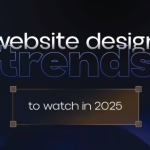The design landscape is undergoing a rapid transformation, driven by technological advancements, shifting consumer expectations, and evolving business models. This evolution is reshaping both design roles and the structure of design organizations.
The Evolving Role of Designers

Designers are no longer confined to the realm of aesthetics. They’re becoming strategic partners, problem solvers, and innovation catalysts. Here are some key trends in design roles:
Human-Centered Design: This approach will continue to be paramount, with designers playing a crucial role in understanding user needs and preferences. However, this will extend beyond traditional user research to encompass a broader understanding of human behavior and emotions.
Design Thinking: As a problem-solving methodology, design thinking will be integrated into various organizational functions. Designers will be instrumental in fostering a culture of innovation and experimentation.
Cross-Functional Collaboration: Designers will work closely with engineers, developers, marketers, and business leaders to create holistic solutions. This requires strong communication and collaboration skills.
Emerging Technologies: Designers will need to stay updated on technologies like AI, VR, AR, and IoT to explore new design possibilities and create innovative experiences.
Ethical Design: As technology becomes more pervasive, designers will have a responsibility to consider the ethical implications of their work. This includes issues like privacy, bias, and accessibility.
Cross-disciplinary Collaboration
Collaboration with Other Disciplines: Designers will work more closely with fields like psychology, sociology, business, and data science. This cross-disciplinary approach will enable the creation of more holistic and user-centered solutions.
Design Thinking and Business Strategy: Design thinking methodologies will increasingly be applied to business strategy, product development, and organizational change. Designers may find themselves involved in strategic decision-making processes.
The Transformation of Design Organizations
Design organizations are adapting to these changes by becoming more agile, collaborative, and customer-centric.
Here are some key trends:
Design-Led Organizations: Companies will increasingly recognize the value of design and integrate it into their core business strategy. Design teams will have a more prominent role in decision-making.
Agile Design Teams: Design teams will adopt agile methodologies to foster rapid iteration and experimentation. This will require a shift towards a more collaborative and iterative approach.
Design Systems: To ensure consistency and efficiency, design organizations will invest in creating comprehensive design systems that serve as a foundation for product development.
AI and Automation: While AI and automation will impact certain design tasks, they will also create new opportunities for designers to focus on higher-level strategic thinking and creative problem-solving.
Key Challenges and Opportunities

The future of design presents both challenges and opportunities. Designers will need to develop a diverse skill set, including technical expertise, strategic thinking, and empathy. Design organizations will need to create a culture of innovation, collaboration, and learning.
Some key challenges include:
- Keeping up with rapidly evolving technologies
- Demonstrating the business value of design
- Ensuring ethical and responsible design practices
However, there are also significant opportunities:
- Creating innovative products and services
- Improving customer experiences
- Driving business growth and competitiveness
Discover more from Wits Technologies Ltd
Subscribe to get the latest posts sent to your email.





